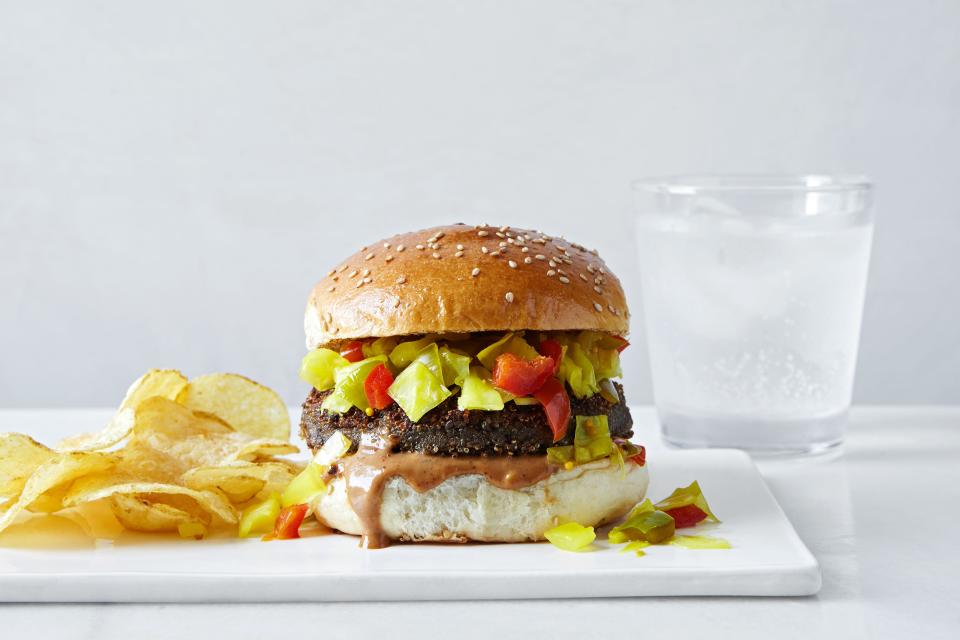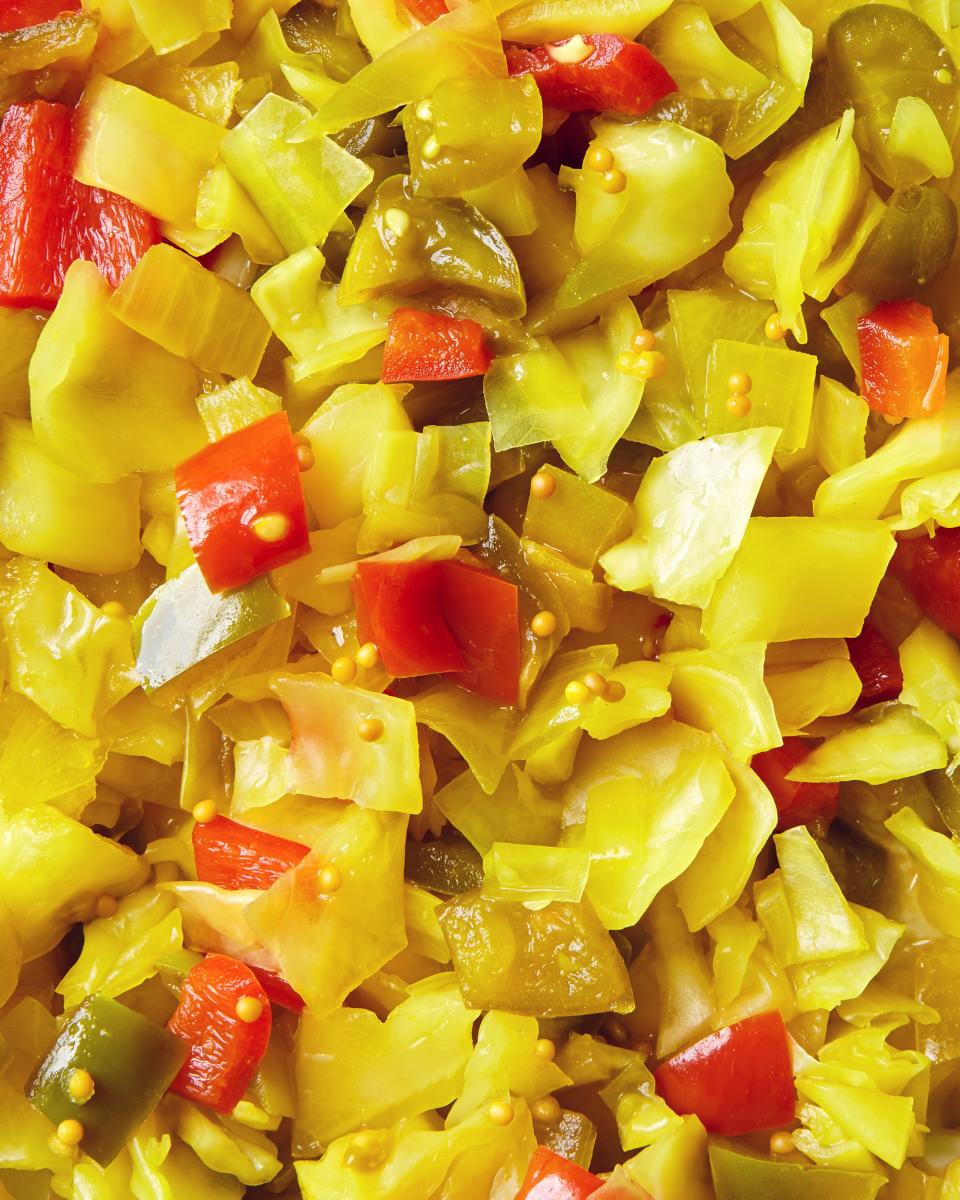The Stories That Shape the Flavors: Black-Eyed Peas, Chowchow, and a Legacy of Resilience
Each of us develops a catalog of ingredients that our palates crave over and over again. It happens without us knowing it: Stories and memories shape those flavors for us, and give them importance in our lives.
For me, the catalog begins with black-eyed peas.
I was born in Kansas. My family arrived there in the early 1900s from the Deep South. The black-eyed pea proliferated in the South when enslaved people who secreted the seeds into the country planted them in that unknown soil. This is one of the stories that contributes to the way I taste, experience, and crave black-eyed peas: My ancestors, stolen from their homes, had the strength and wisdom to bring their survival with them.
In 2005, I had the chance to go to Mali. When I graduated from law school five years earlier, I knew that I wanted to go and spend substantial time on the continent. It was important to me to finally return, after my ancestors were ripped away hundreds of years ago.
My intention was to sit humbly at the feet of my West African aunties and learn whatever they saw clear to teach me. I spent two years there with a host family, learning to cultivate many heritage crops in the land next to our small village. There, I tasted the black-eyed peas that have grown in Africa since the 1400s or before, gracing the original recipes for black-eyed pea stews, sauces, and fritters.
I traveled to Senegal and Ghana, tasting similar preparations with regional differences. Each time, I slowly closed my eyes, overwhelmed by the time travel I was experiencing. I imagined my knowable and unknowable ancestors as they cultivated, harvested, cooked, and shared this beloved ingredient. My heart expanded five times over.

Black Eyed Pea Burger - RECIPE
Of all these dishes, my favorites were the black-eyed pea fritters that were expertly served by street vendors in almost every market and transit station I visited. Depending on the area, these fritters are called accara, akara, accra, or koose, though there are other names, too. I later learned that these fritter recipes made their way to other countries along with the seeds carried by my stolen ancestors. Brazil and Haiti celebrate their heritage and survival with acaraje and akra.
Today I am sharing a recipe with you that is inspired by my love of Africa, my ancestors, and the black-eyed pea. A dish that honors the fritter and also expands to hold my family’s displacement through the Deep South and into the Midwest.
In these patties, the black-eyed pea and ancient grain amaranth create a creamy yet textured foundation on which to layer the umami of mushroom, miso, tamari and the piquancy of parsley, onion, and scotch bonnet pepper. While you could hold these patties together with egg, using flax meal as a binding agent not only means this dish is vegan; it also grants the patty a final earthy note that resonates on a sunny summer day in the backyard.
I remember arriving at those backyard gatherings as a child, seeing and smelling all the delicious dishes we were about to enjoy, but knowing the condiments were their own kind of special. The condiment platter is a family tradition I revere. Usually served on an ornately-designed vintage glass relish tray, the seemingly mundane accompaniments to the meal were transformed into something precious. There’d be green onions (served whites down in a glass of water), juicy sliced beefsteak tomatoes, raw slices of sweet Vidalia onion, crunchy cucumbers, hot sauce, and always chowchow.
Canning and preserving have long been an essential tactic of survival, and chowchow is a condiment born of both ingenuity and necessity. Green tomatoes not yet ripe enough to eat are transformed into a bright, pickled expression of the first days of summer.
They say chowchow began as a collection of remnant produce that couldn’t be used in other dishes, so it became its own reclaimed relish. As you chop each vegetable, consider that origin: Making the most from the least. Creating abundance from scarcity.

Chow Chow - IG
Fannie Lou Hamer, pioneer of food justice and civil rights activist, once said, “When you’ve got 400 quarts of greens and gumbo soup canned for the winter, nobody can push you around or tell you what to do.” From experience, Ms. Hamer knew that the brutality of racism could break a person’s body, but it could not break a community that collectively gardens and grows its survival. The preservation process is a pathway to liberation and love; a legacy of resilience.
There’s something beautiful about being as close to the harvest of the ingredients as possible. About pulling fresh onions, cabbage, green tomatoes, and bell peppers right from the earth. About seeking out a community garden, starting your own plot.
I pair the black-eyed pea patty with the chowchow because the fermented relish makes the creamy black-eyed peas sing. The crisp crunch of the chowchow ignites a profound conversation between these ingredients of the Global South. It’s a dialogue filled with resistance and complexity, telling the memories of a people bent on survival, and the joy of our ancestors’ dreams of freedom slowly but surely coming true.
Black-Eyed Pea Burgers With Creamy Barbecue Sauce and Chowchow
Originally Appeared on Epicurious

